Campus
- Downtown Toronto (St. George)
Fields of Study
- Inorganic Chemistry
- Physical Chemistry
- Polymer and Material Chemistry
Biography
Professor Geoffrey Ozin studied at King’s College London and Oriel College Oxford University, before completing an ICI Postdoctoral Fellowship at Southampton University. Currently he is the Tier 1 Canada Research Chair in Materials Chemistry, Distinguished University Professor at the University of Toronto, and a Founding Fellow of the Nanoscience Team at the Canadian Institute for Advanced Research. Internationally he is an Honorary Professor at The Royal Institution Great Britain and University College London, External Advisor for the London Centre for Nanotechnology, Alexander von Humboldt Senor Scientist at the Max Planck Institute for Surface and Colloid Science Potsdam, and Guest Professor at the Centre for Functional Nanostructures at Karlsruhe Institute of Technology (KIT).
He is considered to be the father of Nanochemistry. His career’s work, which include pioneering studies of new classes of nanomaterials, mesoporous materials, photonic crystals and most recently nanomachines, epitomizes how leading-edge research in Nanochemistry can be most effectively directed towards solving contemporary challenges in Nanotechnology and how these contributions have brought true benefit and well being to mankind.
He has pioneered the field of Nanochemistry with landmark papers that defined synthetic strategies, self-assembly protocols, experimental and theoretical methods for making and understanding structure, property and function relations of new classes of nanomaterials, and showed the way to harness their chemical and physical attributes for a myriad of advanced applications, exemplified most recently by his invention of photonic ink and elastic ink, two new and exciting photonic crystal technologies being developed by Opalux Inc., a new company of which he is a co-founder, www.Opalux.com.
He is globally recognized for his outstanding ability to transform curiosity driven new and adventurous ideas in Nanochemistry into novel and practical solutions to important, timely and technologically relevant problems in Nanotechnology. Through innovative Nanochemistry strategies he has developed exciting nanomaterial-based platforms with properties and function designed, for example to control molecules and materials, electrons and photons in unprecedented ways and that are proving to be useful for a wide range of Nanotechnology applications.
His visionary paper "Nanochemistry - Synthesis in Diminishing Dimensions" (Advanced Materials, 1992, 4, 612) stimulated a whole new field: it proposed how the principles of chemistry could be applied to the bottom-up synthesis of materials "over all length scales" through "building-block hierarchical construction principles": that is, by using molecular/nano-scale building blocks "programmed" with chemical information that will spontaneously self-assemble, in a controlled way, into structures that traverse a wide range of length scales. This was a whole new way of thinking at the time. Today, several strategic global initiatives in academic, industry and government institutions have been built around teaching and research in Nanochemistry, which would certainly not have been the same without his key role in developing the field and inspiring others to employ Nanochemistry fundamental scientific principles to solve challenging real world problems in Nanotechnology.
He has also been a leader in education, taking generations of students far beyond the traditional chemistry syllabus. This has culminated in the textbook, Nanochemistry: A Chemical Approach to Nanomaterials (Ozin, Arsenault, Cademartiri) published by the RSC. Now in its second edition, Nanochemistry has been on the best-seller Nanotechnology book lists since its release in November 2005, and has become the quintessential multidisciplinary text for teaching the subject at universities and colleges across the globe. It is noteworthy that he has just completed an introductory textbook, Concepts of Nanochemistry (Cademartiri, Ozin), scheduled for publication by VCH-Wiley in August 2009. Together these two textbooks are intended to educate a future generation of chemistry and physics, materials science and engineering, biology and medical undergraduate and graduate students in Nanoscience degree programs to prepare them for the challenges of the Nanotechnology revolution.


